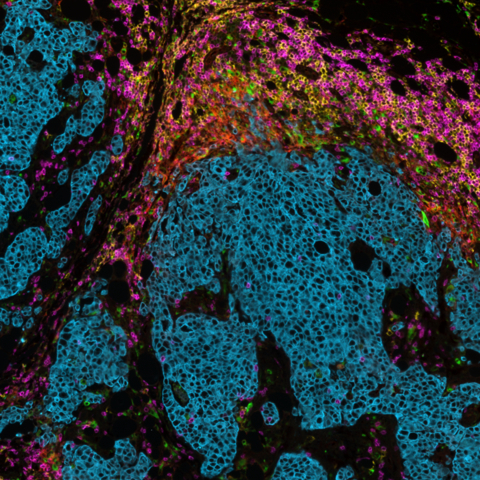LAUSANNE, Switzerland– Lunaphore, a Swiss life sciences company developing technology to enable spatial biology in every laboratory, today announced it has entered a collaboration with the Pathology Department at Massachusetts General Hospital to develop an in vitro diagnostic (IVD) that evaluates sensitivity of solid tumors to poly-ADP ribose polymerase (PARP) inhibitors, with an initial focus on ovarian, breast and prostate cancers. The project will be led by Markus D. Herrmann, M.D., Ph.D., Director of Computational Pathology at Massachusetts General Hospital, who is also Assistant Professor of Pathology at Harvard Medical School. Lunaphore and Dr. Herrmann will collaborate to develop a multiplexed immunofluorescence assay that can measure the expression of multiple proteins using the COMET platform currently installed at Massachusetts General Hospital.
“Spatial biology tools enhance the visualization and quantification of the expression of multiple proteins at once, providing valuable information for treatment decisions,” said Diego G. Dupouy, Ph.D., Chief Technology Officer of Lunaphore. “This partnership will further solidify spatial biology’s role in both improved diagnostics and treatment selection with targeted therapies.”
PARP inhibitors are targeted therapies that are designed to kill cancer cells by preventing them from repairing their damaged DNA. The DNA repair pathway called homologous recombination is of clinical interest as tumors with homologous recombination deficiency (HRD) have been found to be sensitive to PARP inhibitors. However, current methods of identifying HRD in tumors have been varied and imperfect. For example, current biomarker assays are not able to identify epigenetic changes in HRD genes with traditional genotyping assays.
“We look forward to developing a quantitative image-based proteomic assay to comprehensively assess DNA repair at the single-cell level in spatial tissue context and to better predict response to PARP inhibitor therapy,” said Dr. Herrmann. “Adopting spatial biology methods can help us gain pathophysiological insight into the biological processes involved in DNA repair in tumor tissue that may yield clinically actionable biomarkers to improve treatment selection and patient outcomes.”


